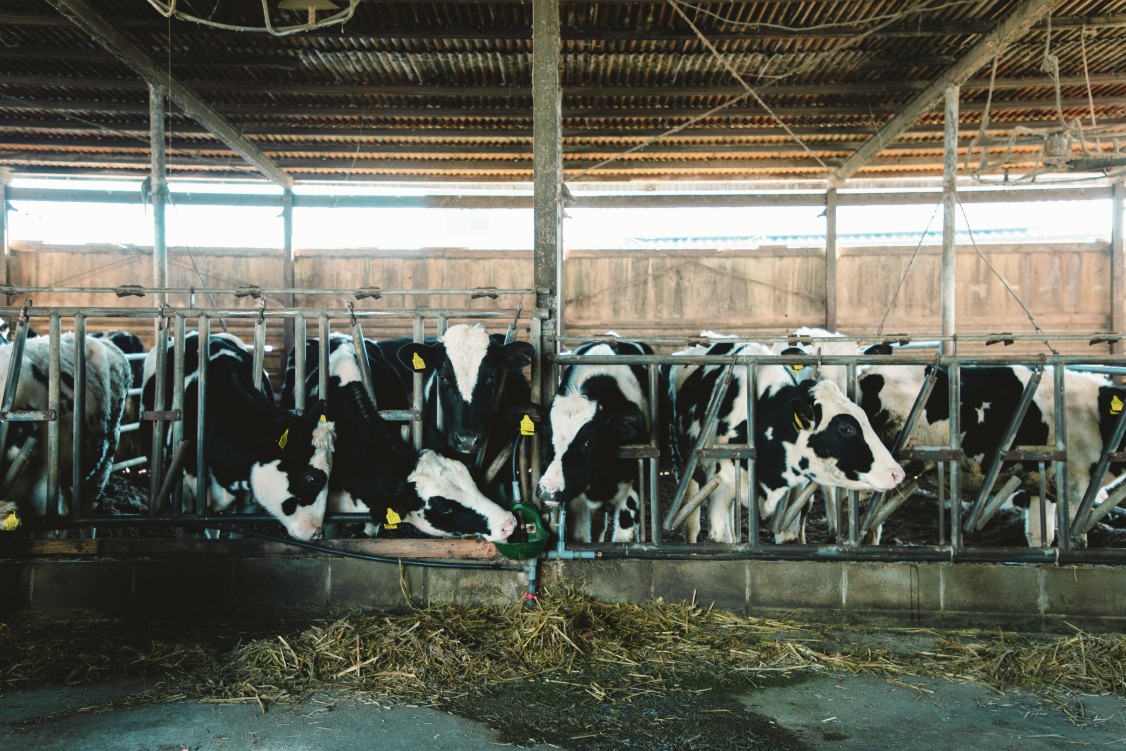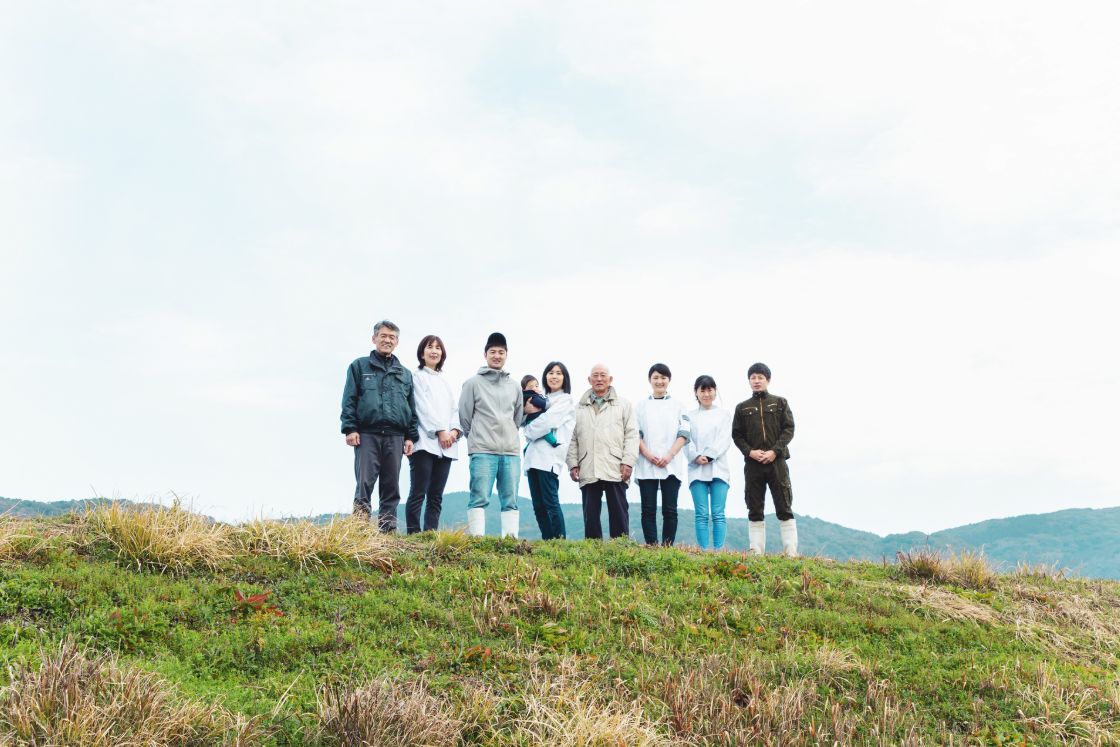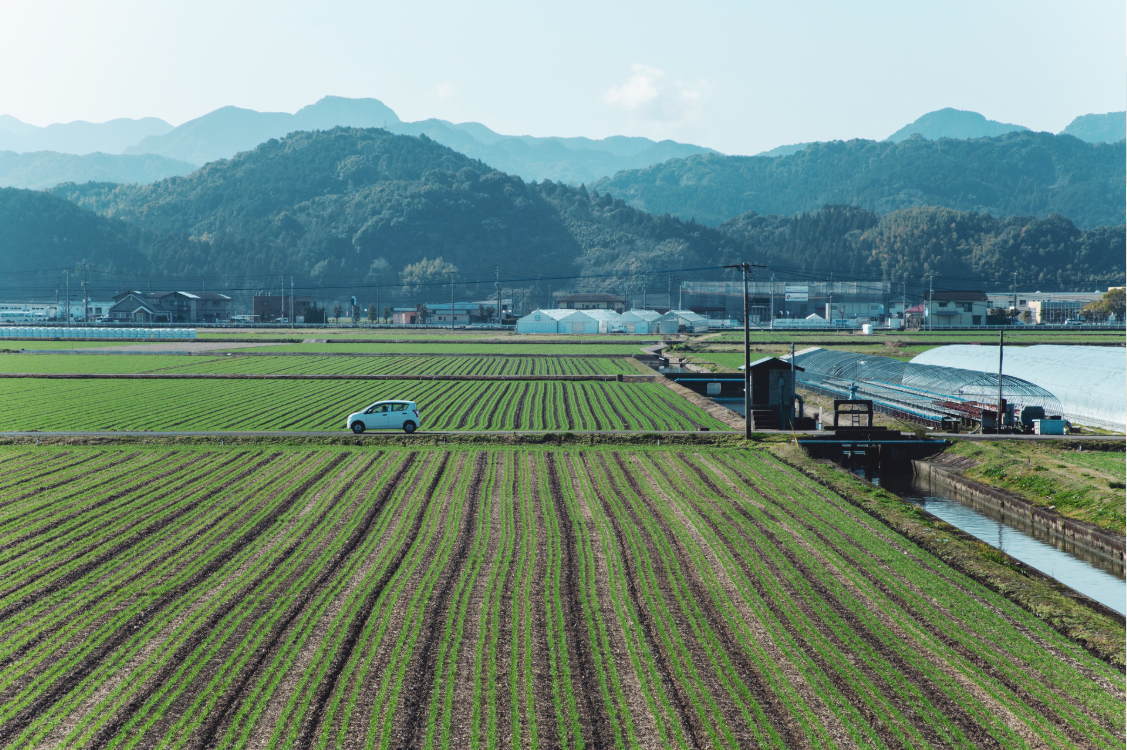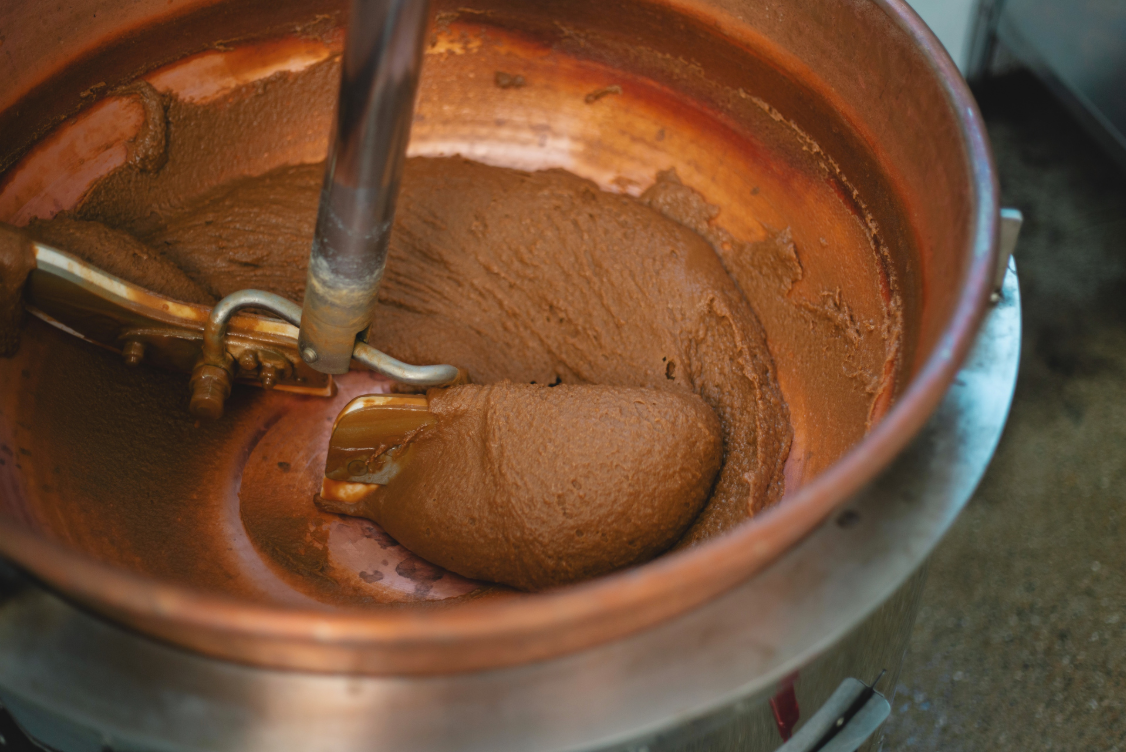【Member Introduction】Nakashima Farm - Japan's first producer of brunost (brown cheese)
写真/松浦摩耶
Nakashima Farm - Japan's first producer of brunost (brown cheese)
In recent years, Norway has gained increased worldwide recognition for its outstanding cheese, with sorts like the blue cheese "Kraftkar" and the Gouda-style "Fanaost" climbing all the way to the top at the World Cheese Awards contest. Along with the great success of Norwegian cheese abroad comes increased attention to other types of Norwegian cheese, among them the unique caramel-flavored brunost (brown cheese). But while brunost is gaining increased attention abroad, there are not that many people who would think of producing it themselves. In Japan, Nakashima Farm has been the very first dairy producer to rise to the challenge. We sat down with their farmer, inventor, and cheese connoisseur, Mr. Hirotaka Nakashima, to learn more.
Mr. Nakashima with NCCJ ED Anette Yamamoto-Hansen
Could you tell me how you got the idea of making brunost?
Our farm already was producing a lot of cheese, which left us with a large byproduct of whey. While whey can be used to produce certain types of cheese, the process is too costly for a small farm like ours, and we were forced to throw away significant amounts annually. It was a huge loss, and I was pondering about how our little farm could turn this byproduct into a beneficial product. I didn’t know about brunost, but instead got the initial inspiration from a Japanese dairy product called So (酥), which was produced between the 7th and 10th centuries and used as a gift for emperors. Back then, So was seen as having medicinal benefits due to its high nutritional values, and is recognized as Japan’s first dairy product. Later, I learned about Norwegian geitost (a type of brunost made from goat milk) by coincidence and was surprised to find that by combining whey and milk I could create a totally new type of cheese. In other words, our brown cheese has taken inspiration both from the Japanese So and the Norwegian brunost.
Our brown cheese has taken inspiration both from the Japanese So and the Norwegian brunost.
How long have you been developing your brunost?
It has been 3 years since I started the project. I had a certain idea about how to make it, but I didn't possess the right tools. Buying equipment is costly, so in the beginning, I went to a place where one could rent the necessary tools. But this limited how often I could practice, varying from once every third month till once a year. Through trial and error, I finally started to get a hang of it, and in 2018, with the next Japan Cheese Award coming up, I realized it was time to make the investment and start producing brunost directly at our farm. We bought a type of machine used to produce anko (red bean paste), custard cream and caramel. The biggest hurdle is that nobody here in Japan has first-hand experience producing brunost, so I had to figure it out all by myself. But I like cooking, and by tasting Norwegian brunost I could imagine what I needed to add in order to get closer to the Norwegian taste.
写真/松浦摩耶
Can you tell me a little bit more about your Norwegian connection?
The Norwegian café Fuglen has been instrumental in strengthening my connection to Norway. I first discovered their café in Shibuya during one of my visits to Tokyo around five years ago. It was close to a conference hall I regularly visited, and the amiable vibe of the place suited me well, so I often stopped by for coffee without knowing their Norwegian background. In October 2018, on the day after my brown cheese won the Japan Cheese Award, I stopped by Fuglen for a cup of coffee. As I was enjoying a cup of freshly brewed coffee outside the café, I overheard the people next to me conversing, saying that "they say this is called brown cheese. It's really delicious!".. Brown cheese?! I was taken by surprise by the coincidence. They talked about the cheese being made of goat's milk, and I was wondering why one could find this type of cheese at Fuglen. I did a little research and got to know their Norwegian connection. I contacted Fuglen, and we arranged a meeting at their new venue in Asakusa. This has been the start of our collaboration, and they have helped to provide extensive feedback, which has led to the further development of my product. The color has gotten darker, and the taste has gotten closer to the Norwegian brunost.
Brunost is a type of cheese unknown to the majority of Japanese people. How do you think your product can succeed in Japan?
When I create a new cheese I imagine various scenes where it can be used. In Japan, most people think of sake or wine when they think about cheese, but I always felt we needed a cheese that works well with coffee. As a cake-lover, I also kept thinking about the lack of options for sweet cheese. When I heard that brunost has a caramelly taste I thought that it was exactly what I wanted to make! My first target is the market in Tokyo, and I really want to let people know that they can get a taste of this unique type of cheese in Japan. In my hometown, our brunost is already gaining popularity. There is a lot of nutrition in brunost, and for elderly citizens, it is easy to eat as it is both sweet and rich in taste, despite having no added sweeteners. You can get a lot of energy just from a small piece of brunost! While one can also eat brunost on a daily basis, we present the product as a nutritional food for elderly citizens. In Norway brunost already is a staple food, so people don't think much about its nutritional value, but I believe this is something that is of importance to the Japanese consumers.
There is a lot of nutrition in brunost, and for elderly citizens, it is easy to eat as it is both sweet and rich in taste, despite having no added sweeteners. You can get a lot of energy just from a small piece of brunost!
Your brunost was named best cheese of the mixed cheese category at the Japan Cheese Award (JCA) 2018. Can you tell me a bit about your thoughts on winning this recognition?
There were two reasons why I applied for JCA with this unprecedented type of cheese. First, I wanted to establish our brand as the first producer of brunost in Japan. Second, I wanted to make other dairy farmers recognize the potential that lies in the byproduct of cheese. And I think everyone got quite an awakening when they realized that the whey they simply had been throwing away could be turned into award-winning cheese! It got a significant amount of media attention as well, but since most people don't know how to use this new type of cheese it hasn't immediately translated into high sales. But at least we succeeded in establishing our dairy as the first producer of brunost in Japan. Business is going well; on one hand, I have been eager to expand my business, but on the other, this would lead to more whey to dispose of. Thus, by receiving this recognition from JCA I feel that brunost really is becoming a key to solve my issue.
Do you have any other comments or thoughts to share?
I studied architecture at a university in Saitama Prefecture, and this has helped me thinking creatively not only about my cheese production but also about how to promote my small town in Saga Prefecture. I hope that our farm can become a source of pride for the people in my hometown. Saga is not a prefecture known for cheese, so it is also an interesting twist of fate that our tiny farm now produces this Norwegian-style cheese. In the future, I hope I get the chance to represent my hometown by participating in a cheese competition in Norway with my brunost!
Related sites:
➡ Nakashima Farm - Brown Cheese Homepage (External Site)
➡ All Member Updates
This is a news update from one of our Corporate Members. We invite all Corporate Members to contact us with news that might be of interest to our community.
写真/松浦摩耶









